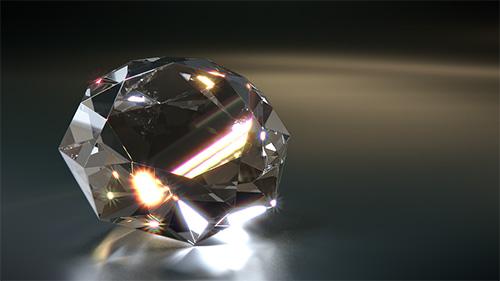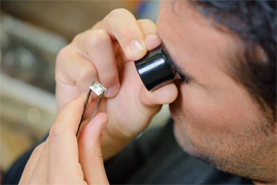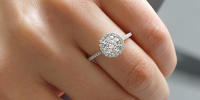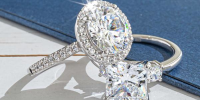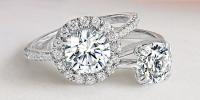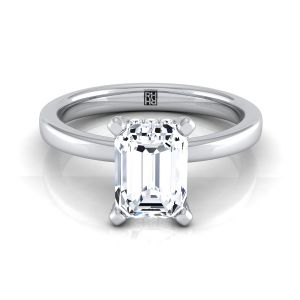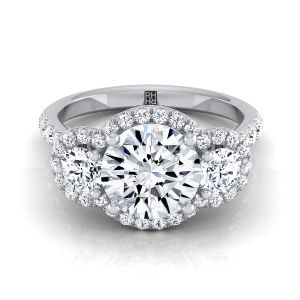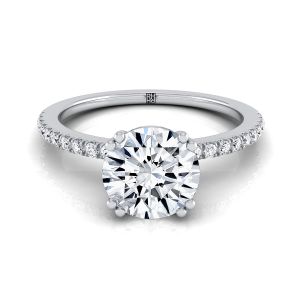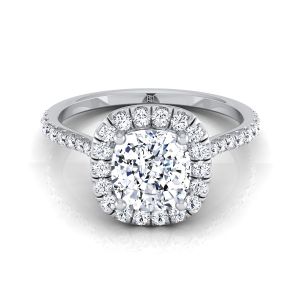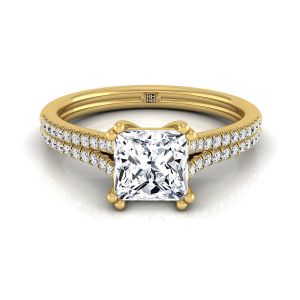
Birefringence is one of the more interesting phenomena seen in
gems. You see this as
stones polarizing light and sending it out in more than one direction, in what is called double refraction. Birefringence is essentially a measure of how much double refraction a
gem possesses, and is one of the factors that allow gemologists to identify certain
stones. It is comparable to the tests used to determine the authenticity of a 1.1 carat
diamond ring.
Natural zircon, for instance, is a convincing imitation for
diamonds, which also has a high value for
birefringence, which real
diamonds lack. The latter, as well as other
gems possessing an isometric system, have a single refractive index each. Any other crystal system would cause the presence of more than one RI, making the
stone doubly or even triply refractive.

The main
birefringent effects seen in
gems are pleochroism, fuzziness, and double images. Pleochroism causes changes in color based on the viewing angle, which is an attractive quality in a
gemstone. Fuzziness is just what it sounds like. Double images are exhibited by some
stones, where the facets on the other side of the viewer look doubled in number.
 Birefringence is one of the more interesting phenomena seen in gems. You see this as stones polarizing light and sending it out in more than one direction, in what is called double refraction. Birefringence is essentially a measure of how much double refraction a gem possesses, and is one of the factors that allow gemologists to identify certain stones. It is comparable to the tests used to determine the authenticity of a 1.1 carat diamond ring.
Natural zircon, for instance, is a convincing imitation for diamonds, which also has a high value for birefringence, which real diamonds lack. The latter, as well as other gems possessing an isometric system, have a single refractive index each. Any other crystal system would cause the presence of more than one RI, making the stone doubly or even triply refractive.
Birefringence is one of the more interesting phenomena seen in gems. You see this as stones polarizing light and sending it out in more than one direction, in what is called double refraction. Birefringence is essentially a measure of how much double refraction a gem possesses, and is one of the factors that allow gemologists to identify certain stones. It is comparable to the tests used to determine the authenticity of a 1.1 carat diamond ring.
Natural zircon, for instance, is a convincing imitation for diamonds, which also has a high value for birefringence, which real diamonds lack. The latter, as well as other gems possessing an isometric system, have a single refractive index each. Any other crystal system would cause the presence of more than one RI, making the stone doubly or even triply refractive.
 The main birefringent effects seen in gems are pleochroism, fuzziness, and double images. Pleochroism causes changes in color based on the viewing angle, which is an attractive quality in a gemstone. Fuzziness is just what it sounds like. Double images are exhibited by some stones, where the facets on the other side of the viewer look doubled in number.
The main birefringent effects seen in gems are pleochroism, fuzziness, and double images. Pleochroism causes changes in color based on the viewing angle, which is an attractive quality in a gemstone. Fuzziness is just what it sounds like. Double images are exhibited by some stones, where the facets on the other side of the viewer look doubled in number.









